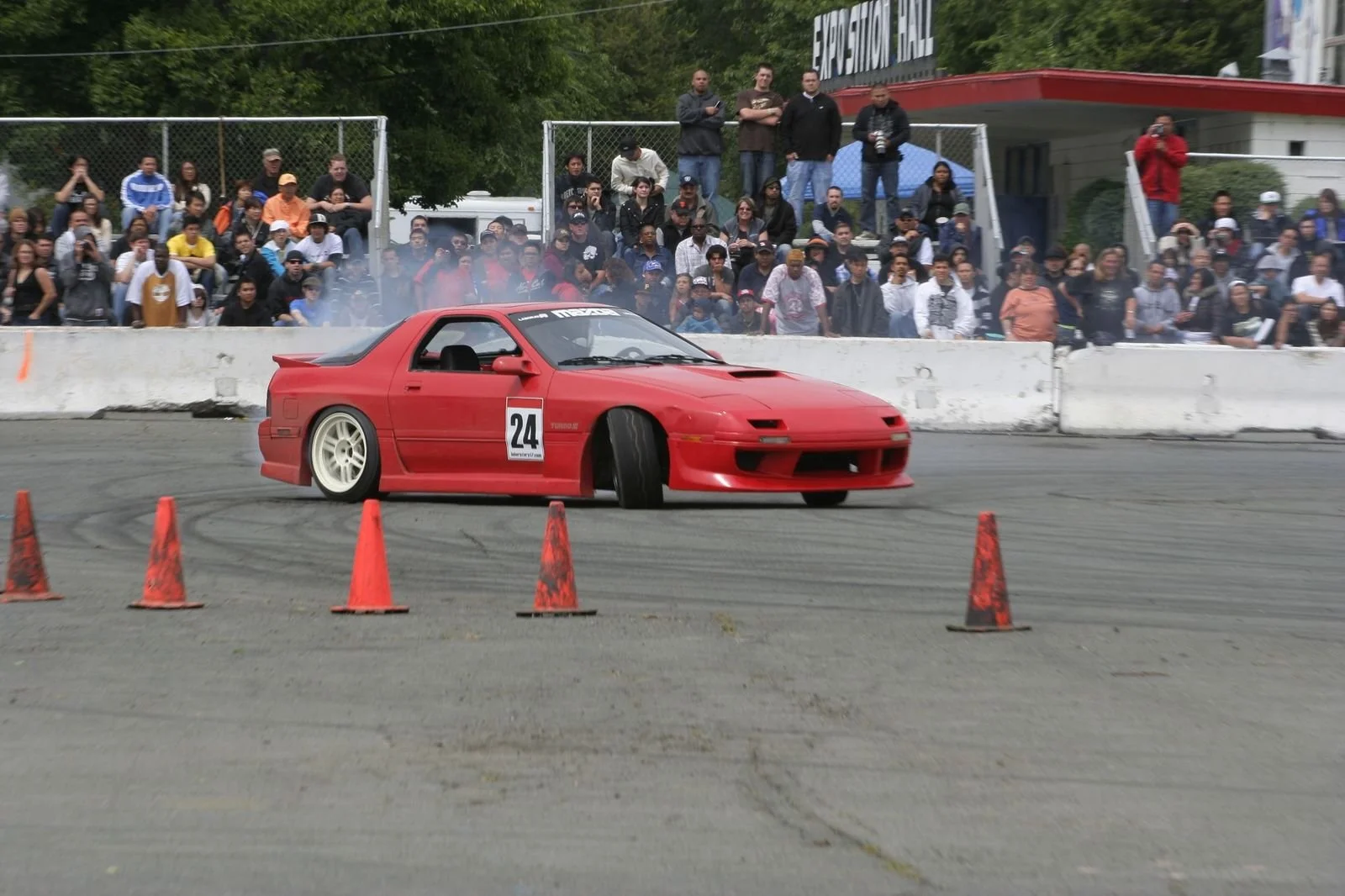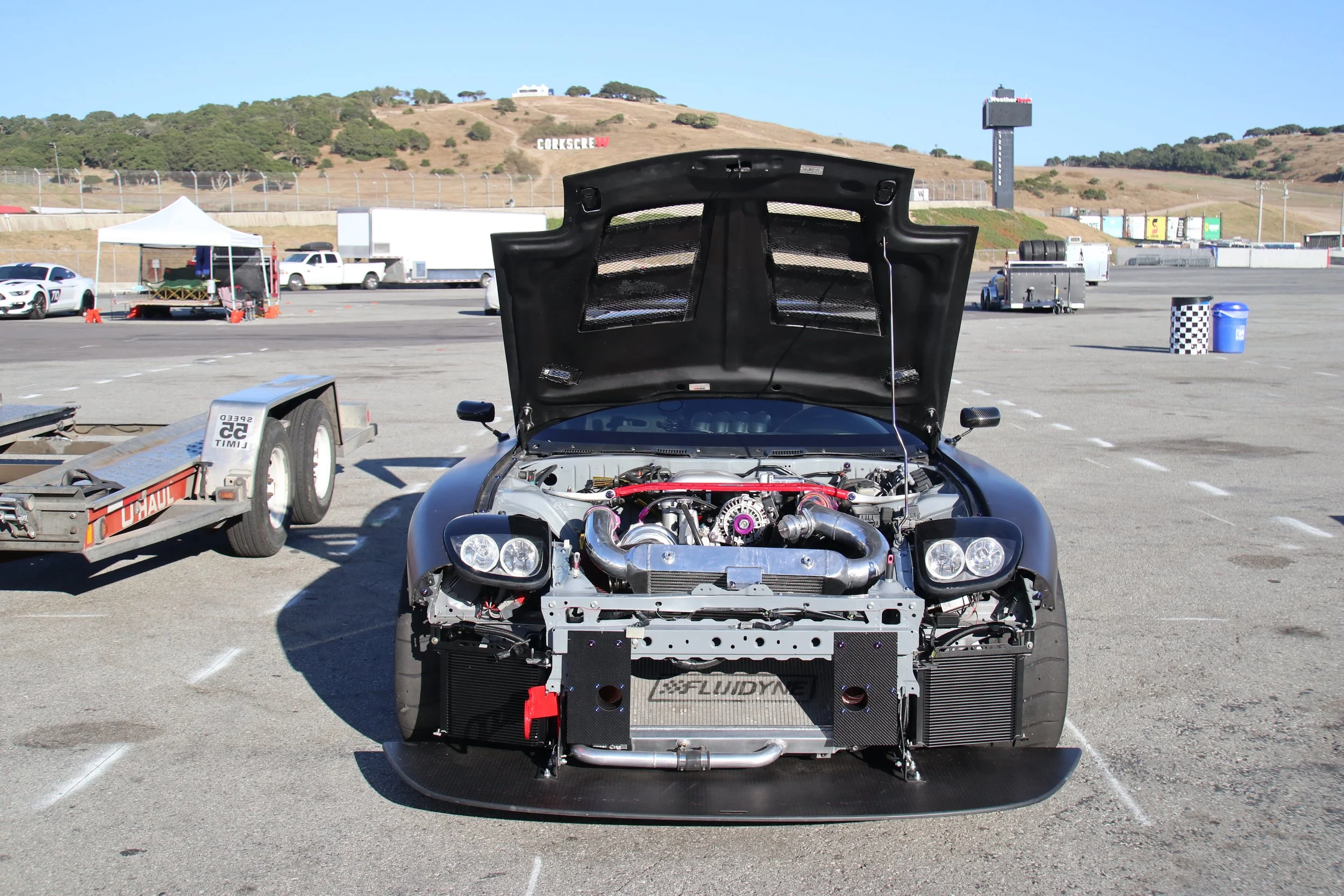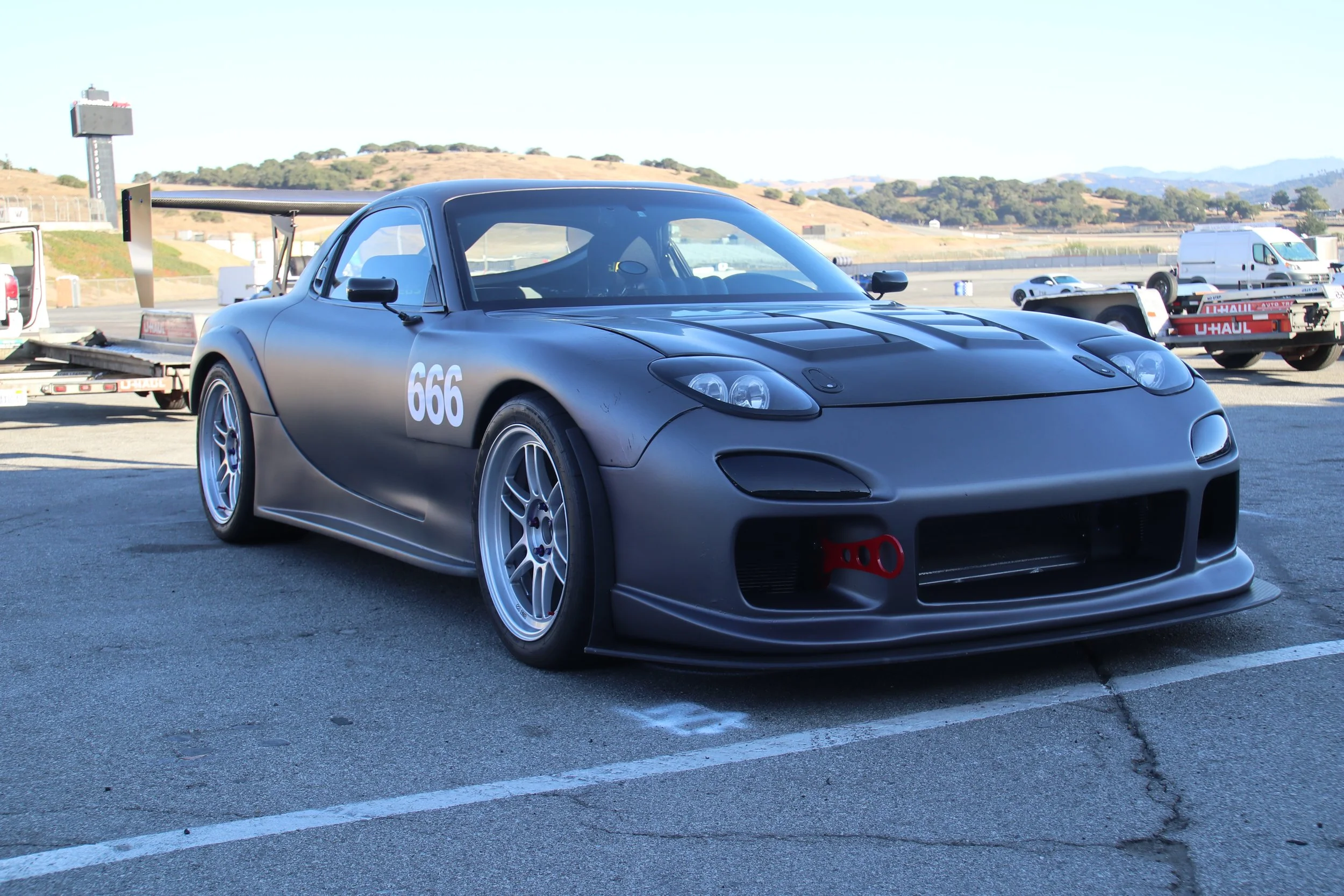Joe’s RX-7: Long Time Coming
Joe didn’t let fear keep him from starting his love affair with the rotary engine quite young. After a fling with a CRX, he picked up his first RX-7 at 17. This Turbo II, the first of eleven second-gen RX-7s he would go on to own, was a surprisingly swift car that earned him street cred he never asked for. “I once beat this girl’s boyrfiend in a drag race. He had a new Mustang Cobra and I’d just turned the boost up. She came to school the next day telling me about how her brother wanted to kill me. I didn’t get it — it was just a street race.”
He came a long way from teenage antics just as quickly as he got started in cars. The second-gen RX-7 would carry him first into drifting with Nor Cal Drift Academy back in 2004, where he was able to start getting his speed fix in a pro-social manner. Four years later, he picked up a third-gen RX-7 and jumped into track days with the intent of building a dedicated race car, but life intervened.
When his financial predicament forced Joe to take a break, he considered a more cost-effective hobby, but his love for racing won out and pushed him to find a better-paying job. Shortly after selling a lot of Gamestop stock, he put together enough money to purchase a mint third-gen. The only modifications were a set of coilovers, an exhaust, and a v-mount intercooler.
After flying to San Diego to inspect the car, he had to roll the dice. “I knew it was a gamble, but I decided to drive it back to the Bay Area. Not something anyone would do with a thirty-year-old rotary car, but this one was nice enough to convince me it’d probably make it. As soon as I got home, I replaced the OEM suspension — I mean every piece — with adjustable or track-focused parts.”
Along with a set of Tein Flex-Z coilovers, Enkei RPF1s wrapped in 275-section NT01s, and Hawk Blue brake pads, he had made his first step towards making this pristine car into a full-on race car.
Sadly, he’d have to wait longer than he anticipated to experience the RX-7s potential on track, since, after a year of enjoyable, issue-free canyon driving, it failed his first time out on track. “First time to Thunderhill in this thing, and it gave me one full session before it went bang,” he laughed.
With the car back on the track without an engine in its bay, Joe pondered his predicament for a while. As he’d rebuild the motor for more reliability and leave no stone unturned in the process, he figured he’d go ahead and make the cosmetic and aerodynamic changes he’d initially planned for a step much further down the road. Along with a Racebred splitter, he added a Battle Aero wing and both a diffuser and a widebody kit from Shine Auto, as well as their carbon hood.
As he knew what the odds of an engine failure were, he’d planned for the worst and had already picked up a Mazda crate motor, complete with an old-school Turbonetics single kit.
To spare himself any frustration, he had to adopt modern ways. “I went from having a hot rodder’s mentality to a twenty-first-century tuner’s,” he added. After picking a Haltech 1500 ECU, largely for the failsafes it offered him, he had it tuned conservatively by DK at a modest twelve pounds of boost. With a rich mixture and a healthy 300 horsepower at his disposal, he’d have adequate power and some peace of mind the next time he took the car to the track.
“I rely on a heavy premix ratio: two-stroke oil and 101 octane fuel. That’s one of the best precautions you can take.”
All the preparation paid off. During his shakedown at Thunderhill, the water never got above 180 degrees — the v-mount setup and large Fluidyne radiator doing their jobs. The oil, however, was hovering around the 215-mark most of the day. To remedy that issue, he installed a set of thirty-row oil coolers. He’s confident that the car in its current state can handle the next few track days without issue, so he’s moved from focusing on the car and addressed the loose nut behind the wheel.
“The plan for ’25 is to visit all the NorCal tracks, work on my driving, and start competing in Speed SF Challenge. There are other things I’d like to do to the car: a wider widebody, 315s at all four corners, Bosch ABS, and traction control through the Haltech. The plan is to get the car running at its best before I can dump any more money into it.
Wisely, Joe decided to throttle the power output until he’s grown accustomed to big turbo power. Once the next round of modifications is installed and operational, he’ll turn the boost up a bit, but he won’t go crazy. As much power as a tuned 13B-REW can provide, is known first for its handling, and that’s what Joe’s prioritizing alongside reliability.
His thirteenth-ever RX-7 has been an emotional investment as well as a financial one, but it seems that twenty-odd years of working with rotaries has taught him what the platform can do when all the proper precautions are taken, including the necessary TLC, fueling, and oiling to keep things copasetic.







